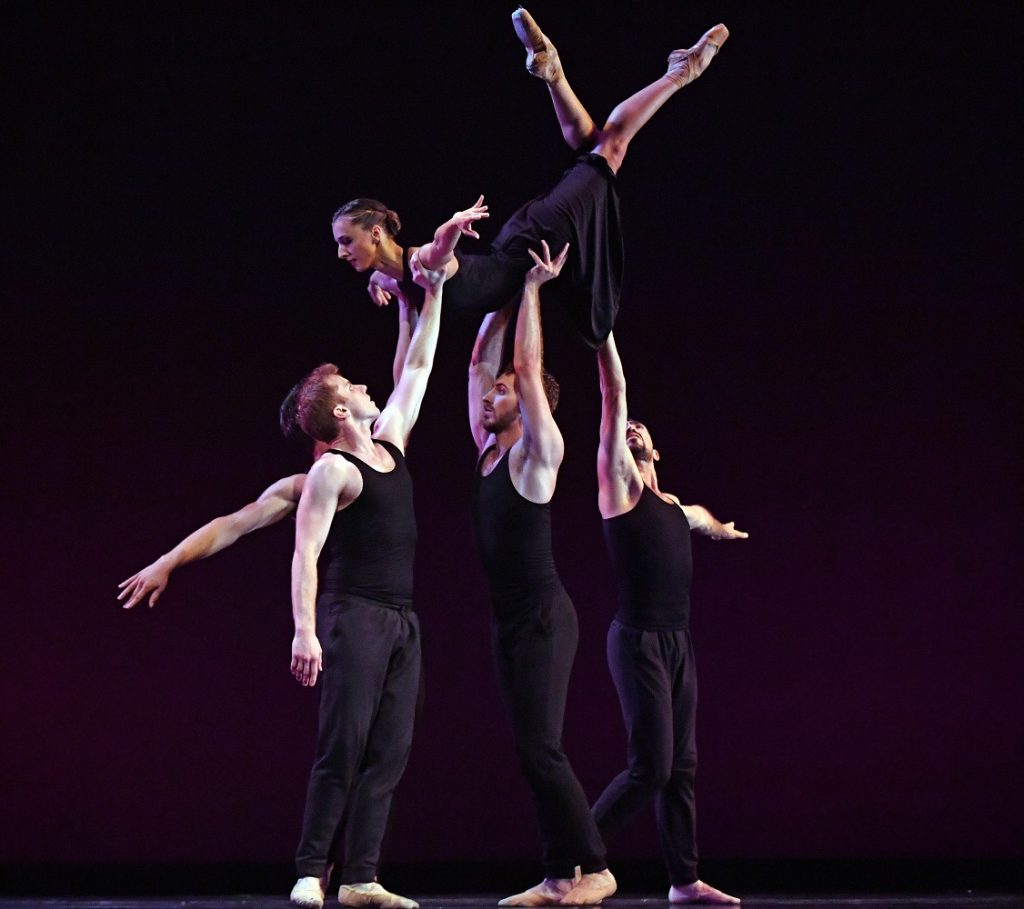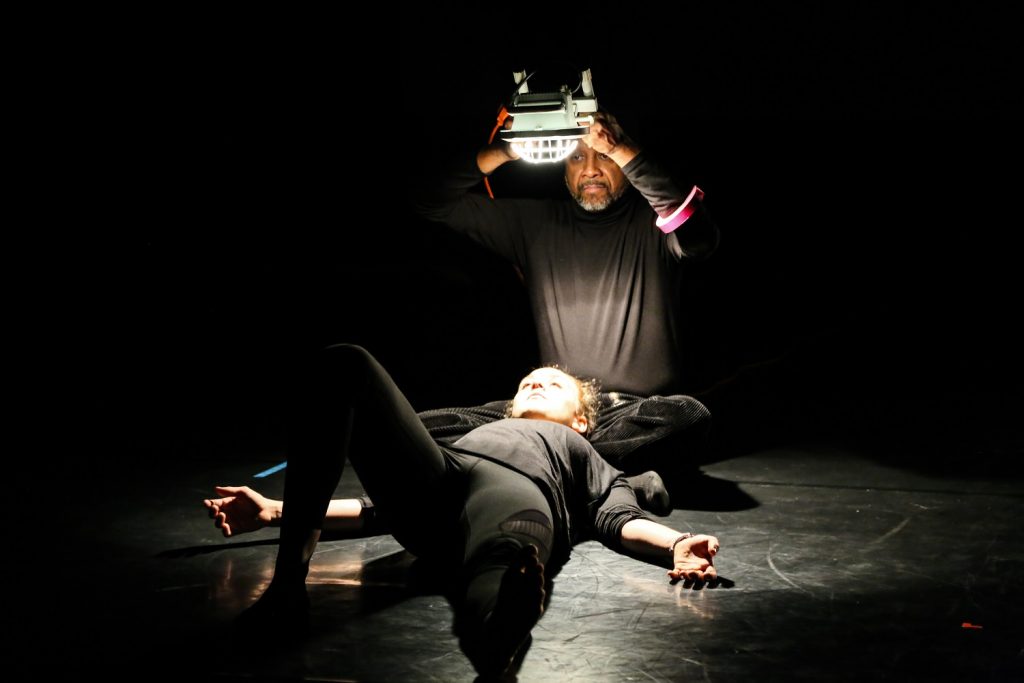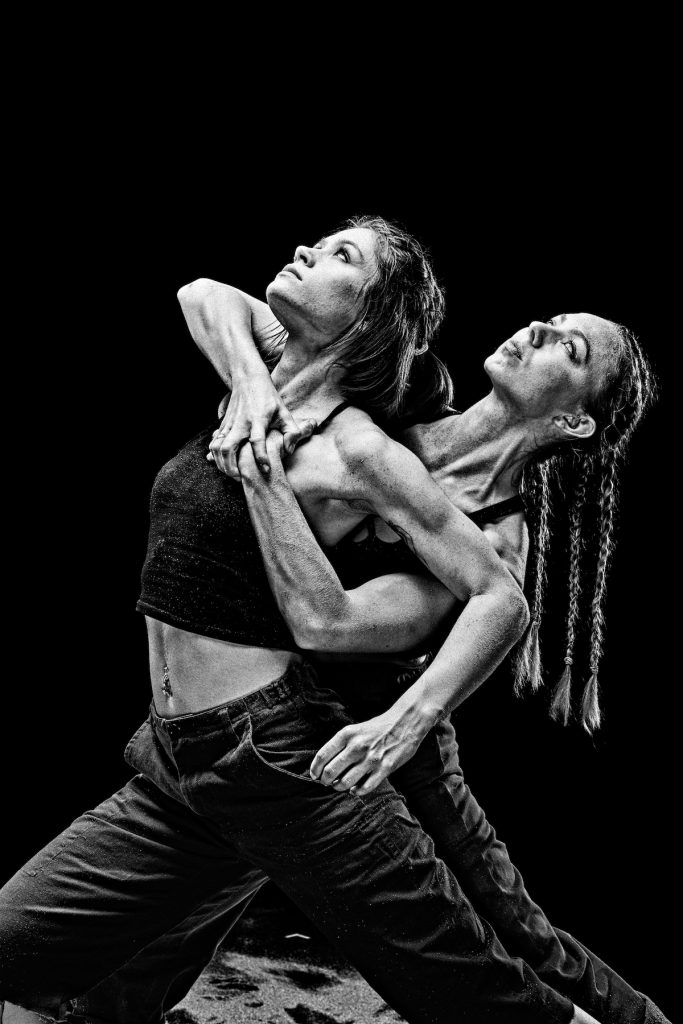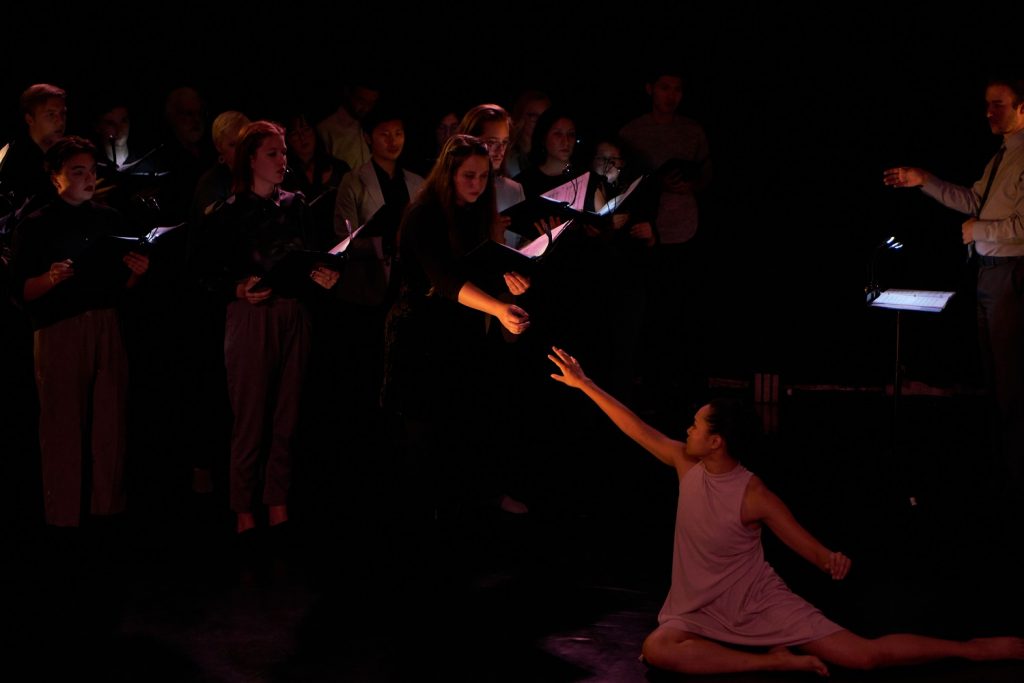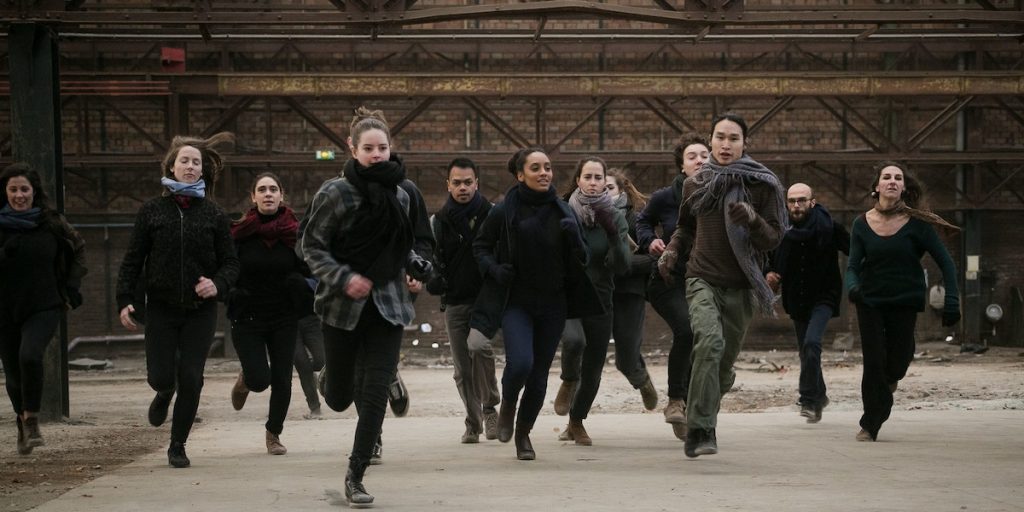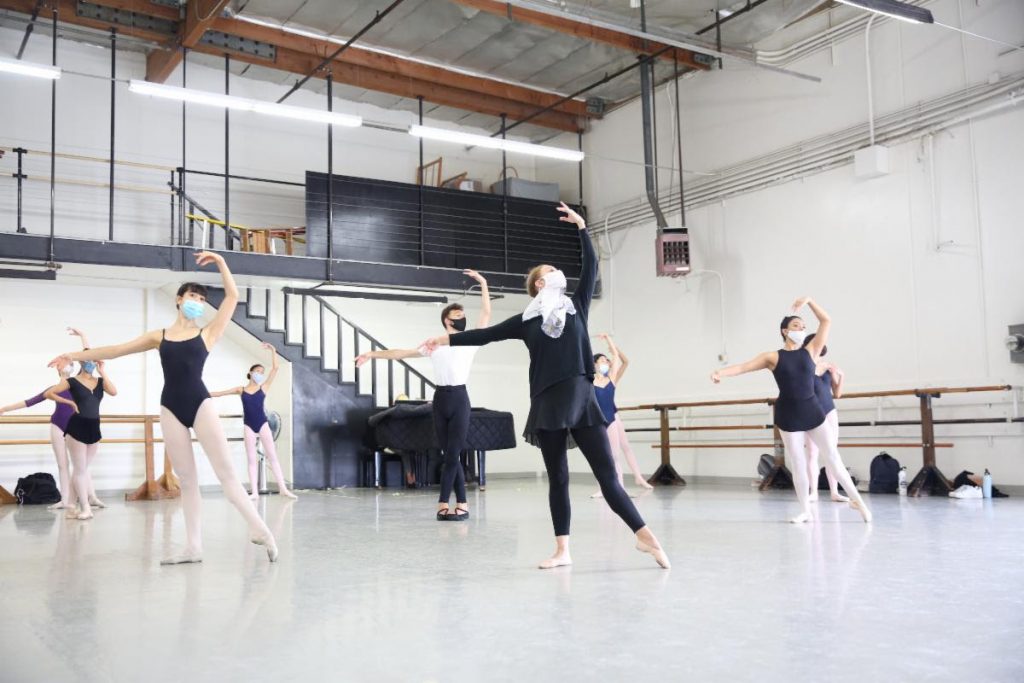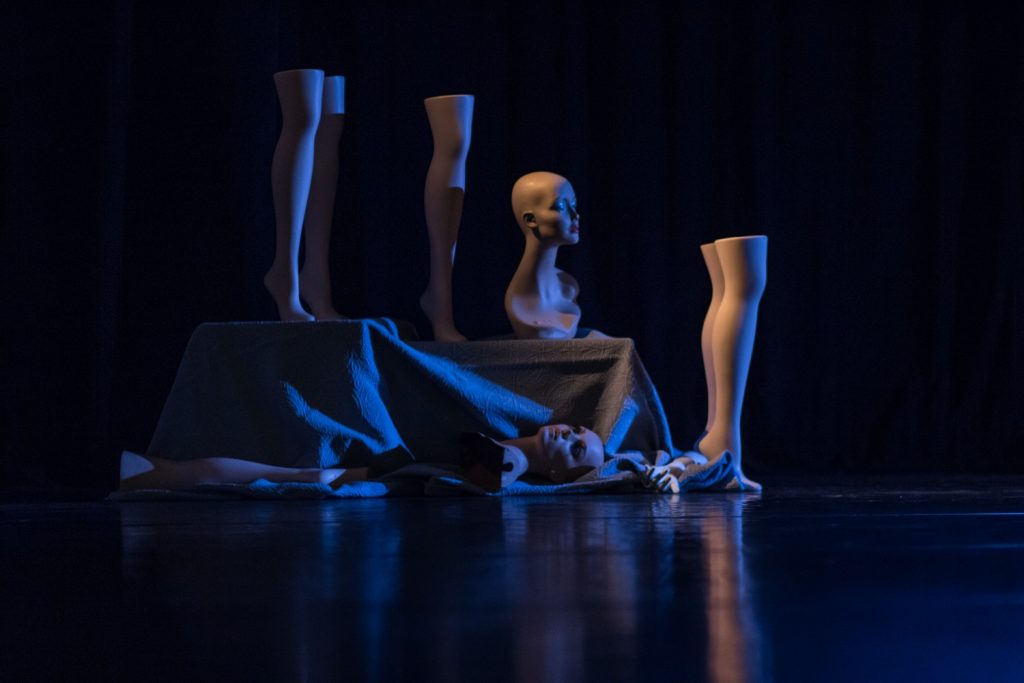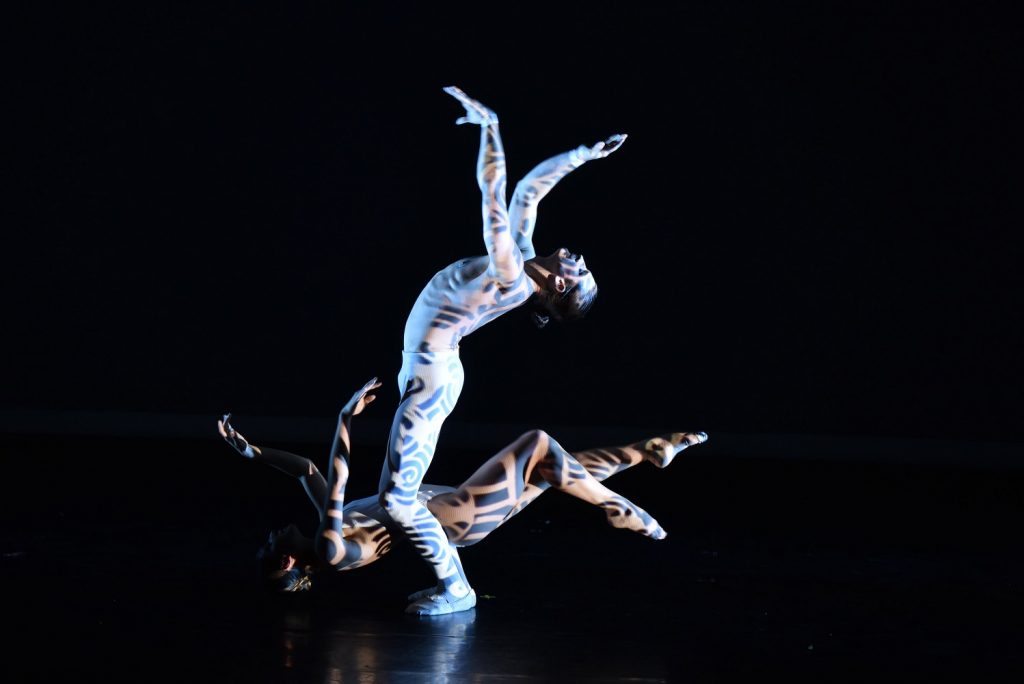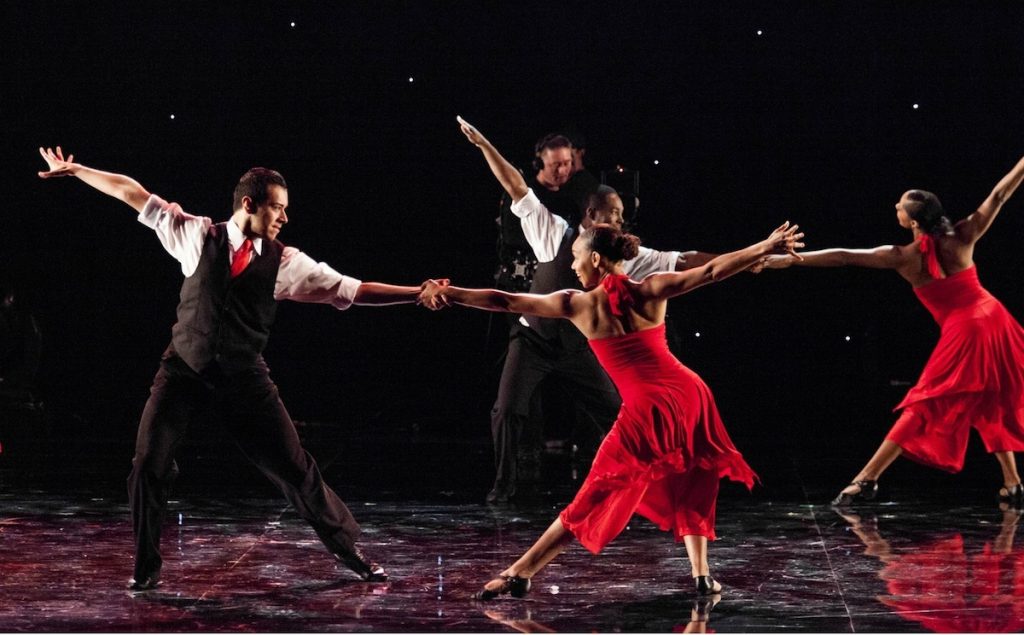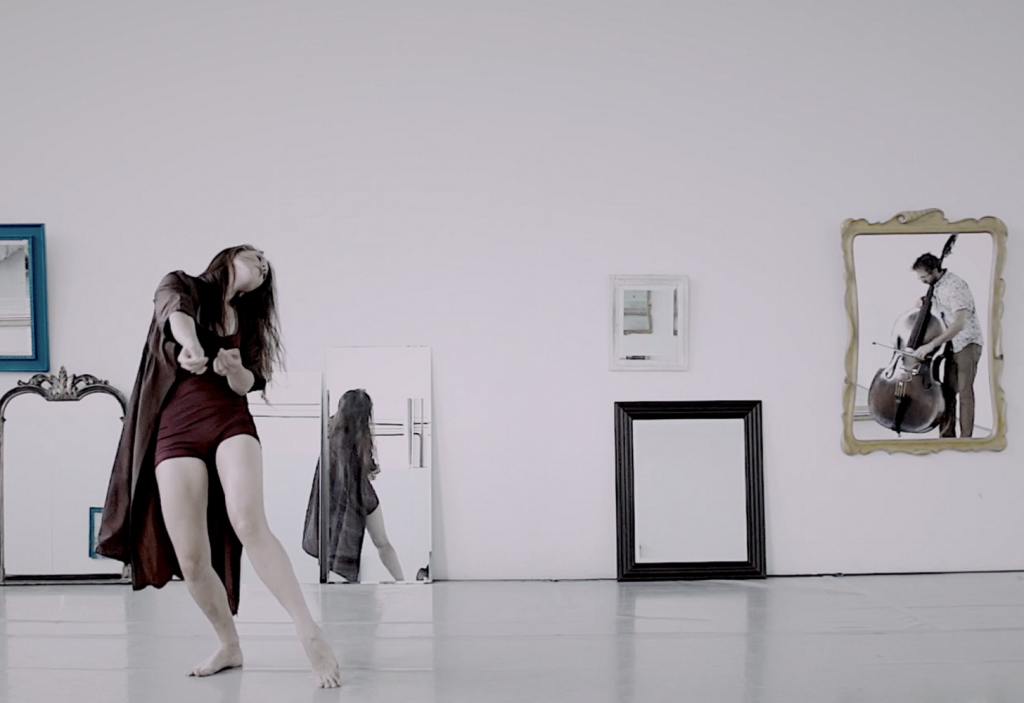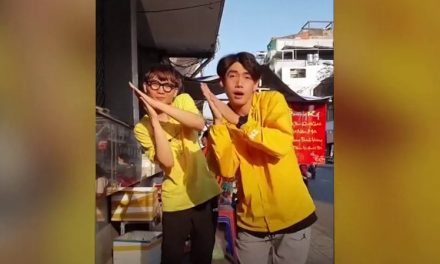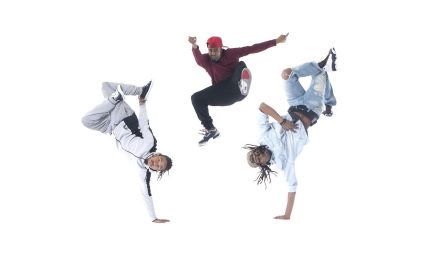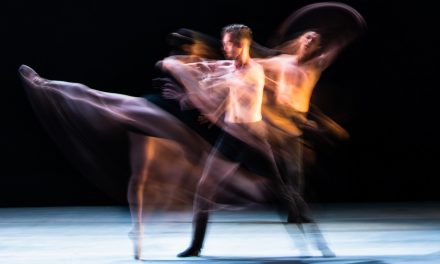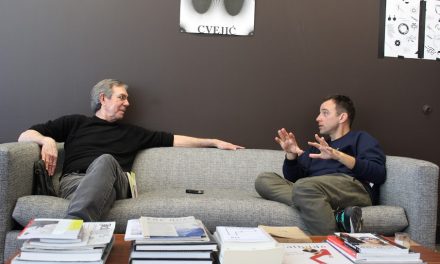Since I began writing about how the dance community has been coping with the pandemic, yet another long running dance studio has closed. After 28 years, EDGE Performing Arts Center owned by Randall Allaire and Bill Prudich announced that it is being forced to close and look for a new home. With some of the finest dance studios in Los Angeles, EDGE has been where dancers could go to train with the who’s who list of the entertainment industry’s professional choreographers, teachers and other professionals.
Parts I,II, and III of this series investigated the initial shock felt by the dance community, their recovery and how they began to bounce back. Part IV looks into what if any funding was available to dance artists and companies to help pay rent, salaries and/or online projects. I also asked them to share their thoughts on how these past few months affected them, their dancers and the community as a whole.
When asked if they received emergency funding, Bike, Purtill, Hargraves, Roston, Doede, Sternberg, Helle, and Warner answered with a resounding “No!” or “None”. Marks, Stoller, Taylor have not received any emergency funding but wrote that they were fortunate to have jobs that did not disappear or that they were able to teach virtually. Pearson answered that he had not applied while Brodie, Lynch, and Brockus have been utilizing funding from grants that they received for the 2019-2020 fiscal year. Brodie added, however, “We did not apply for the CARES act loans as I did not want to incur any debts.” (Just before this article was published Brockus received a COVID-related grant that will allow her to keep her studios open for a few more months.)
“I’ve received unemployment with the Covid 19 funding,” DiVito wrote. “This was a gift.”
Reichlin stated that local funding had not been kind to her company. Unlike other large cities such as New York, Los Angeles does not offer as much financial support to the arts, especially dance. Sadly, during the AB5 uproar it was discovered that the state assembly had not included Dance in the Fine Arts category. Why? Excellent question. Most other organizations do.
“DCA said we had too many dancers to get an emergency grant from and reminded me we would still be getting their regular grants, and Dance Resource Center did send a small check which only paid for one of the 6 dancers that we (had) paid anyway for the first cancelled performance,” Reichlin said. “I counseled the dancers with what I learned in many Zoom meetings given by APAP, WAA, etc. on how to get unemployment, or individual Paycheck Protection Program (PPP) grants, as they were not eligible for a while on the 1099 funds (which did come through eventually except for our ‘Internationals’), and PPP was available for independent contraction, but not for the company.” As for herself, Reichlin applied for unemployment just in case her other funding ran out.
“After the teaching on Instagram in May and June, we started concentrating again on Urban and Tribal Dances and when we got back into the studio (2 rehearsals till it closed down again) came up with another of one of my first dances in 1980 to revive, Early Earthen.” Reichlin continued. “DCA is allowing us to produce the outside San Pedro Festival of the Arts online.” (The San Pedro Festival of the Arts 2020 did indeed take place on September 19 and 20). “LA City Rec and Parks will not do permits for an undetermined time. Our regular grants from the County and CAC are coming through and hoping the contracts start advancing funds before we run out. We are still waiting to hear from the new LICF funds for small businesses I applied for, the only one the city or county has opened up to small companies and non-profits who don’t use employees. This is a big issue for the arts.”
Allegra Clegg (Westside School of Ballet owner and daughter of Yvonne Mounsey) stated that the school applied for the PPP loan but that it took an awfully long time for the funds to come through forcing their teachers to be put on furlough for six weeks. “Meanwhile our Volunteer Guild and Board of Directors launched a Crisis Relief Fund (“1500 Angels”) with the goal of raising $150k — which we anticipated is the minimum we would need to offset the lost revenue from classes and our Spring Performance. We have now raised just over 2/3 of that amount ($107k),” Clegg wrote. She stated that their plans for continuing the school’s funding had already been put in place via a drive-in movie event titled “Grace and Grit” which will include many pre-professional Westside Ballet dancers and several alumni, such as Lucia Connolly (Joffrey Ballet) and Molly Novak (Boston Ballet). These performances are scheduled for October 9 and 10, 2020. “In addition, we want to draw attention to the special partnerships we have with several local organizations such as the Santa Monica College Dance and Music Departments,” she added.
As of this writing, while subsisting on unemployment Shilling was in the process of applying for two grants “It took some time before I saw a grant that felt like it applied to me; since I was lucky to have teaching work through mid-May, I didn’t even consider a need for additional funding,” she stated. That work did not last, however, and although she had her “fingers crossed” for her summer freelance income to still be there, that too has vanished.
When Gamson’s performances of Sugar Houses at REDCAT were cancelled, her company performers were able to apply for emergency funding and they were awarded funds by the Los Angeles Department of Cultural Affairs. Taylor said that her company received emergency funding from the Black Art Futures Fund.
“We had received a 2020 City of Culver City Performing Arts grant to re-stage Expansiveness: Changing Perspective as part of our annual celebration of National Women’s Equality Day, Rodenhouse and Brown responded. “Once it became clear this project would need to be virtual with a scaled back cast, the pairing of this particular work with a virtual audience felt like a natural progression for the piece.” (MashUp presented Expansiveness: Changing Perspective online August 23, 2020.)
McDaniel’s company received Economic Injury Disaster Loans (EIDL) from the Small Business Administration (SBA). According to the SBA website “The amount of the EIDL Advance was determined by the number of employees indicated on the EIDL application at $1,000 per employee, up to a maximum of $10,000. The EIDL Advance does not have to be repaid. Recipients did not have to be approved for an EIDL loan in order to receive the EIDL Advance, but the amount of the loan advance is [to] be deducted from total loan eligibility”.
“We cannot rent since all the studios were shut down, and even when reopened, it is too dangerous for us to gather and rehearse.” McDaniel stated.
As soon as funding became available, Sefton wasted no time investigating all avenues. “The LA Department of Cultural Affairs offered funding for individuals and organization with 3 or fewer performers, which we don’t qualify for. Similarly, the DRC had some money, but it was a small amount,” She wrote. “Since we operate on a project-by-project basis and don’t have ongoing payroll, many programs didn’t fit us either. Sefton’s company Clairobscur Dance is located in City Council District 4 which she says should have some funding available for new works created in response to the pandemic, and she is applying for that funding. She added, however, that her organization primarily sat still and held on to the cash that they hoped would come through with new projects. “Even if we go into Safer at Home orders again my new work will still be able to be performed in the fall,” she said.
Harris stated that Psychopomp Dance did receive funding from a few organizations but did not elaborate on who they were.
What became crystal clear from reading through these responses, was that all of these dance organizations were struggling to keep their heads above water. The funding was limited and all the companies in Los Angeles were trying to dip into the same pool of money. Once again, this raises the question of why, in one of the wealthiest countries in the world are so many small businesses, such as dance companies, struggling so? In most civilized and developed nations, the arts are totally funded by the government without, in many cases, a fear of censorship from those governments.
After hearing from the artists about how they and their companies were directly affected by the pandemic shutdown, I thought it important to ask how they felt about the overall affects upon the LA dance company overall. What harm has occurred and what are their concerns about how this has harmed an already struggling art form.
“I think for the many gig dancers and dancers who make most of their living with commercial work it’s been devastating,” Pearson stated. “I work for The LEAP Program which helps professional dancers earn a bachelor’s degree, and we’ve seen an uptick in dancers interested in starting or going back to school. I think the question of sustainability is at the forefront of dancers’ minds.” His love of dance in LA has been constantly kindled, however, by viewing streaming events such as the BlakTinx Dance Festival and HowAreWe.xyz. “Most of us are used to self-producing and self-funding and working in nontraditional spaces so in many ways I think LA dancers have a built-in resiliency as part of our practice,” Pearson said.
Like her colleagues, Stoller realizes that this pandemic hit the world broadside and that it has devastated the dance community in LA and beyond. Right now, she sees no end in sight. “So many projects have been canceled and postponed, jobs have been lost, and beloved studio spaces have permanently closed. Our art form is all about connection and moving through physical space, which is extremely hard to do when you are stuck at home alone in a small space,” she said. Noting the numerous online classes, workshops and dance intensives that have been created, Stoller believes that the pandemic has proven just how resilience the dance community is. “As a community, we have demonstrated that we are nimble and adaptable. We are used to overcoming challenges as a community and as individual artists and companies. During this difficult and challenging time, I have found our community to be a source of inspiration,” Stoller wrote.
As stated in Part I, I began this project to let the dance community know that they were not alone. Since arriving in 1978, I and my colleagues have longed for a more cohesive dance community. If there is one hope on the horizon, maybe it is that the pandemic will succeed in bringing the community closer together where others have failed.
“If I am to be honest about it, I have mixed feelings’” Purtill said. “Let’s start with the negative: In the larger picture, we are not all on the same page in terms of how we truly need to be 100% shut down in order to fight this and get us back on track. I have seen *many* studios and teachers operate outside the stay-at-home order and that only divides us further. We *all* want to be back in the studio as soon as we can but we can’t unless we all agree safety is paramount. Another unfortunate negative is the lack of support and cohesion I have seen in the LA dance community.”
Recognizing that everyone has had different reactions to these unsettling times, Purtill reached out to her colleagues to offer support and encouragement. She was also seeking ways in which all of them could aid one another through deeper collaboration. “I’m a bit disappointed they stick to their stratified divisions. The pandemic has been the great equalizer and I think these individuals and companies are missing out.” Purtill stated that the positive side of her situation was that she had made many wonderful connections outside the LA dance community which included experts and specialists in Washington, D.C., Australia and “dancers all over the country and this has given me terrific ideas for future creative projects.”
Roston has been particularly saddened by the closing of so many studios. “I think there may be more closings to come,” she said. “It’s so hard to meet the rent on the kind of large space that dance requires. This pandemic has dealt a huge blow to the dedicated people that run theses dance spaces.” Because many of LA’s dance artists have figured out a way to create interesting online material, Roston wonders if there might be a way for the community to organize fundraisers to help the studios that are still somehow managing to continue. “The creativity of the LA Dance Community is wonderful. I loved the LA Dance Festival videos in conjunction with Dance Camera West. Really beautiful and inspiring work,” she said.
“It is a very sad moment for artists who rely on performance to survive,” Hargraves wrote. “I sense the creative frustration and soulful pain of LA dancers. We need each other in person!”
“The combination of the pandemic and AB5 has been devastating,” Sefton said. “I know of several studios that will not re-open and dance companies across the country that have closed their doors. The one good thing has been the development of the LA Dance Coalition. We would never have been able to get these diverse leaders together in one room because of geography in the past and none of us would have had the time to meet and work as hard as we have been in order to launch a coalition like this. It is a new step for our community coming together in this manner. We are hopeful as to what we will be able to achieve for our community.”
Several artists have used the word devastated when describing what has happened to the performing arts community. They also worry that LA and the rest of the country may be in jeopardy of losing some of its companies, dancers, and/or choreographers. They hope, however, that this time has caused artists to think differently and perhaps even more creatively. “I saw this happen during the AIDS Virus…the loss was overwhelming,” DiVito said.” However, I think it has begun to give us all a whole new world of possibilities and opportunities we didn’t expect.”
DiVito was referring to the fact that following the shutdown, dancers began teaching and taking classes, not just here in LA, but with teachers from around the world. “How about reaching students internationally, creating knowledgeable dance video artists to get some of the fabulous contemporary creations online for posterity, discussions with the great artists of our time, reaching out to the world,” she asked? “Now we just have to figure out how to monetize the whole thing so those artists and mentors don’t decide to quit the whole scene and become stockbrokers.”
Lavac also used the word devastating but added that she felt hopeful. She knows that by not taking class on a regular basis or in a normal setting such as the dance studio, that they (dancers) will lose stamina. “I say that as far as our dancers at Westside Ballet, because I have seen my dancers rise to the occasion – to self-instruct themselves to a degree. I’m surprised and inspired in how the dancers have improved in these very limiting circumstances,” Lavac said. “Dancers are unhappy about our situation, and yet, no one has lost their love or desire for dance. So as far as the dance community as a whole — their entire world is on the back-burner for many professional dancers, and I feel sad about their careers being on hold.”
Lavac went on to say that she has recently noticed a stronger connectivity amongst the community through social media. “So as far as the dance community as a whole — their entire world is on the back-burner for many professional dancers, and I feel very sad about their careers being on hold.”
A few of the choreographers have discovered that they enjoy working with dance in an entirely different arena such as creating for the camera. Others have shown no interest in creating work for the camera but recognize its draw and its importance. “This pandemic, if they can make it through financially, may give them a new way to work in dance.” Bike said. “For all of us – dance folks and not – I’m hoping that this is a time to reassess our values and create actions that will make a better world once we are through this particular period.”
“I see many of my colleagues presenting new and old pieces online. I don’t see that there is revenue in this, but the project of imagining possibilities in a restricted environment has always been the strength of dance makers and dancers, so I saw the dance community doing just that,” Marks said. “For me, I REALLY didn’t want to watch dance online.”
In normal times, every single one of these artists work daily inside dance studios to teach, rehearse and sometimes perform in. Each of them spoke about how sad they were to see several studios like Wolfe’s we live in space, Pieter, EDGE and others forced to close. Oddly enough, the often online community-wide rituals of saying goodbye to these beloved spaces, studios whose owners had often struggled for years to keep in operation, have helped bring some healing to everyone. Marks called it a strengthening of bonds “through shared trauma”. “Some artists and companies are more singular in the way they pursue their art-making,” Marks said. “Some already see themselves as part of a work community, sharing space, attending one another’s performances. Probably the pandemic has strengthened each artists proclivity for continuing as they had been, only more so.”
“We live in space has closed. Pieter, which opened a month before I moved to L.A. from New York, just closed its doors,” Wrote Shilling. “Pieter was both a community anchor and a satellite, in that the community encompassed and embraced so many people and practices that you could feel Pieter like a kaleidoscope in other areas of the city and even in other parts of the country! Now that Pieter has lost its physical space and is imagining a new home with all of its classes continuing online, it has never felt clearer that Pieter exists through the artists and people who inhabited, cared for and felt included within its walls. It’s a huge blow and I think we will feel the resonances of these closures for a very long time in ways we may not yet know.”
Doede acknowledges that the pandemic has affected everyone in similar and different ways. Everyone has felt the fear of contracting the virus, losing loved ones, or watching income disappear. Some fold under the pressure, some take longer than others to shake it off, and still others turned and faced the challenge head-on immediately. “It’s all I’ve been able to do to keep my work and the company in the forefront. I have paid attention to ARTS LA and have signed petitions. I’m not exactly sure that the LA dance community considers a company in Pasadena to be part of that community. I’d like to think so, but I’m not sure,” Doede stated.
We all realize that this pandemic, the quarantine, and the closures have affected the dance community throughout the United states. LA has a unique style of dance and faces proximity issues that other cities do not, but when it comes to the pandemic, everyone is in this together and facing identical financial and artistic hurdles.
“But I do feel that this is an opportunity for the arts to become more integrated into the fabric of our culture so that they are seen as an integral part of our community, not a luxury or an afterthought,” Sternberg stated. “As we rebuild LA the arts should be in the room with business, with education, with the medical community – with all facets of the city because we can become part of the rebuilding efforts. It’s important not to isolate ourselves but to become vocal about what we can contribute to rebuilding our communities, also taking into account the racial disparities that need to be addressed. This could be a pivotal time for the arts to become more inclusive if we recognize the opportunity and get in the ‘room where it happens’.”
Dancers train together, working side-by-side in a classroom. They rehearse in groups large and small. They sweat together and get to know each other’s bodies in a way that most other people do not. Even if a choreographer chooses the professional route of solo artist, that artist has grown up in a studio surrounded by other dancers as they work to hone their physical and expressive talents.
Shilling began the following statement with the caveat that she was speaking as someone who has never been exclusively a solo artist. “Dance is a way of imagining and creating worlds together,” She said. “I learn the most in an embodied space that is shared with others; about humility, limitations, empathy, compassion, resilience, fear, resistance, freedom, aliveness and every day I feel as if I am missing my tools. Getting out in the streets, joining the BLM protests and street actions are teaching me similar lessons and have felt like the most important actions my body has ever undertaken. How will this shift in our embodied action – what dancers inherently know how to do – shift our dance community? This is the question. I’m reticent to attach to any answers.”
Dance is a beautiful art form, but it is a tough profession for 99% of the dancers who choose to pursue a career in dance. Overall, the pay is low and unless one lands a job in a major, well-established company with the financial backing to pay a year-round salary, a steady salary is never guaranteed, i.e. the title “gig worker”. We work job to job, and sometimes two or three at a time. Dancers today often work as contract artists with three or more companies.
Dance companies in the United States, including the more established ones, depend on a constant financial flow of income from donors, corporate funding and county, city, state and federal grant organizations like the California Arts Council, LA County Arts Council, LA Department of Cultural Affairs and others. When a dance company from Europe tours the US with its elaborate sets, costumes, etc., it shines a huge spotlight on the money gap between the funding available to the Arts in Europe and what is not available here.
“We are not going to survive this without serious broad government help that goes directly to sustaining the dance companies,” Helle said. “Without that, there will be no more of the wonderful array of groups we’ve grown to know and love over the last ten years of the LA Dance Renaissance.”
“It was already tough to navigate the geographic and aesthetic distancing of Los Angeles. It’s made it much tougher. It’s also made necessary changes unavoidable – considering how work is seen, what you’re saying, how dancers are compensated, relationships with curators and presenters etc.,” Stated Gamson.
“I think that it’s unfortunate to see so many artists out of work. I think however, it could be a great time to be inspired, and sparked to inspire others,” Wrote Micaela Taylor. “Whether (or not) that be through performance in open spaces.”
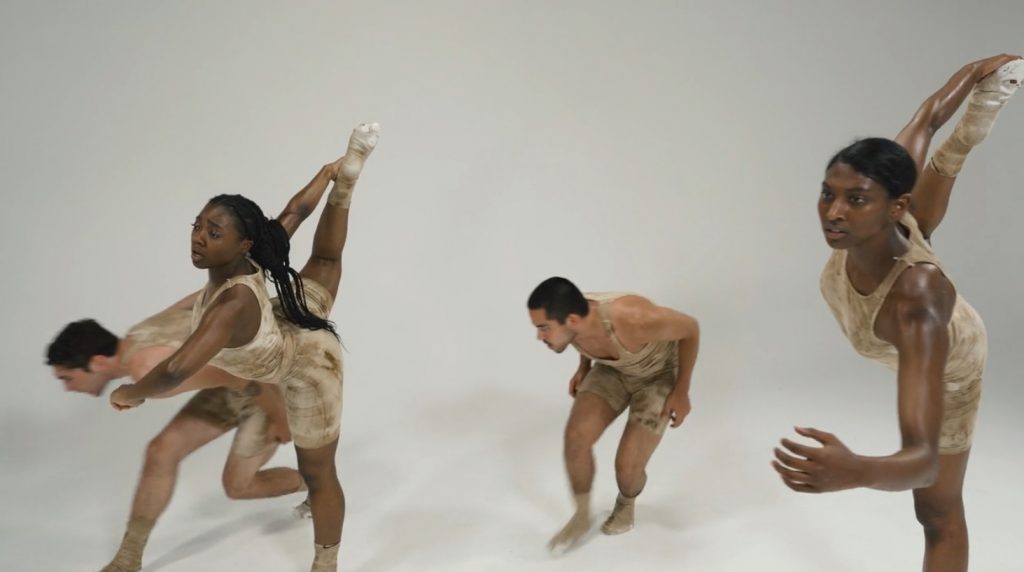
L to R Matt Luck, Emara Neymour. Santiago Villarreal, Micaela Taylor in “Toughskin” – Video still courtesy of The TL Collective.
“But it is not all doom and gloom,” McDaniel wrote. We have great opportunities when faced with barriers, and great creativity can flourish in the face of adverse and dire circumstances such as these. The pandemic and resurgence into the spotlight of the Black Lives Matter movement has created a great moment in art-making and storytelling through movement during this time.”
McDaniel cited artists like Austyn Rich, Jakevis Thomason and others who have paved the way by making outdoor, site-specific dances, videos and dance films that are addressing not simply the pandemic but social and political themes of white supremacy, systemic racism, police brutality, and more. Jacob Jonas/The Company had great success performing PARKED at the Santa Monica Airport parking lot with approximately 35 cars parked in a circle, their headlights acting as stage lights. Other companies such as LA Dance Project, Westside Ballet and Clairobscur Dance are following suit with this idea.
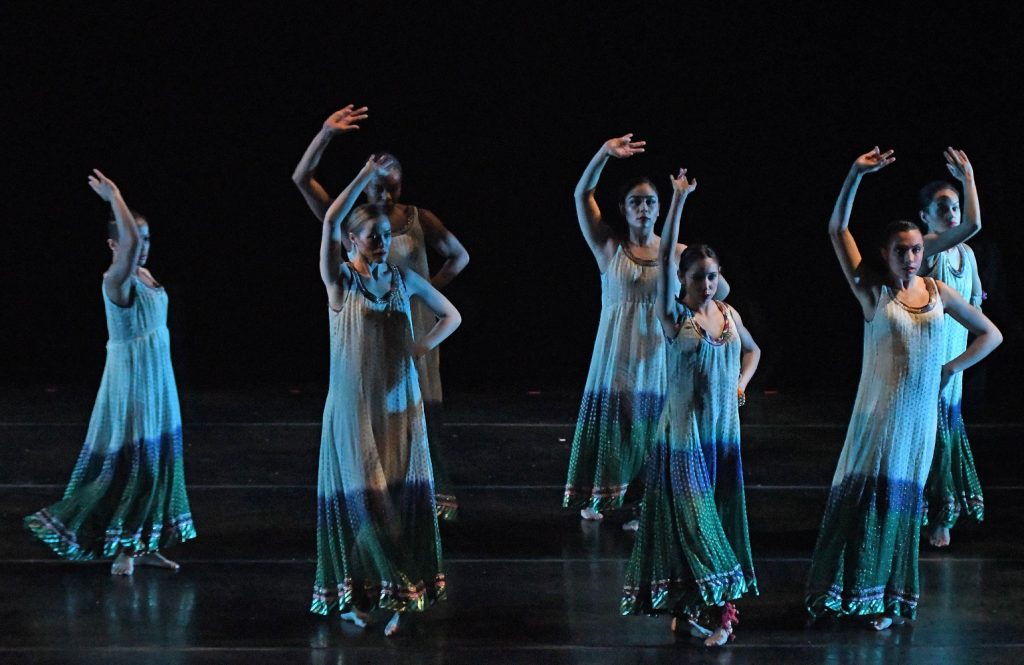
Blue13 Dance Company performing the West Coast premiere of “F**k Fusion Version2: Or, How to/Not to Be Adequately Indian” by Artistic Director/choreographer Achinta McDaniel – Photo by Kevin Parry
“The problem is that funding does not exist for artmaking, especially dance making during the time of COVID-19,” McDaniel added. “Dancers just are not valued as part of the economy, which is a mistake and has always been a problem for us in LA in particular. We are essentially all working for free.”
McDaniel’s company, Blue13 Contemporary Dance Company, organized roundtable discussions on all of the above topics and said that there were a lot of LA dance artists who expressed enthusiasm about continuing those discussions. “To that end, we are launching a new Instagram interview series: Blue13-Flip the Script, a weekly interview with artists from all over LA first, then nationally and internationally, addressing systemic oppression, anti-Black racism, and of course COVID-19 in relationship to these themes,” McDaniel said.
“It was already tough and a struggle for so many of pre-pandemic, so to see so many organizations and individual artists rising above the challenges, and continuing to teach, create and share their work is very heartening and inspiring.” Pat Taylor wrote. I’m heartbroken for the studios that have closed and organizations that have ceased operation. While trying our best to keep things in perspective, I’m sure many of us are pretty stressed by the uncertainty of things.”
With no clear end to the pandemic, it is difficult for anyone to make what we used to consider “normal” plans. When companies do not have confirmed future bookings, how do they plan ahead? When studios are closed, how can they create group works? Finding themselves without an income, many dancers were forced to move back in with their parents or other relatives in other states. Without their dancers, how can a choreographer create new work or even rehearse to maintain their current repertory? Some dancers are leaving LA. Who knows if they will return or even what work will be available if they do?
“While we’re open to pivoting to solo work and increased dance film projects, we are mourning the loss of creating collaborative ensemble work, together,” Rodenhouse and Brown stated. “We are feeling the pressure to reevaluate our budget projections and funding sources. Our grantors have been extremely helpful in navigating this process, and we are grateful for the initiatives from the local LA funders to provide quick support to artists.” As noted above, MashUp recently presented an online revisit of a work titled EXPANSIVENESS: Changing Perspective, a piece that was driven by multimedia and live projection streaming within the space, but like so many dance companies, remain uncertain about how involved they will become with online technology.
Warner is an independent artist and writer who is looking at what has been taking place in the dance community through a different lens. “From what I can tell it’s been devastating,” She wrote. “Without the ability to rehearse, take class or perform I am not sure how any company can move forward. I think remote teaching has limited potential although it offers some small possibilities. Though dancers and choreographers are finding inventive ways to use video and film it is still an extremely limited medium. Until venues can open and audiences can gather the dance world will be in limbo. I feel great empathy for the young dancers and choreographers who have had to put their careers on hold.”
“This pandemic has decimated the dance community and even more glaringly pointed out the disparities in established/financially well-off organizations or artists and emerging artists,” Harris said. “Large companies that own their own space and are more entrenched in the fairly small community survive and even can make work. Being once an insider to a larger company in LA, I know through the grapevine that proper social distancing, mask wearing, sanitization are not followed but because some larger companies are a bubble and the leadership seems impenetrable/ unquestionable no one says anything. I know from personal experience that some specific larger companies have terrible workplace practices on many levels. However, these establishments survive while smaller freelance artists are crumbling.”
At the time when I sent the survey out to the artists in the dance community Brockus was not feeling optimistic about the future of dance in Los Angeles. “Gone – it is going to be just gone between AB5 & Covid shutdowns,” She wrote. “We are losing our spaces and dancers are leaving town and moving to other careers and those staying are 6 months out of shape. There is no work and looking like no good paid work for some time.”
I know for a fact that Brockus’ mood and outlook has since lifted and shifted to not giving up. She has worked far too many years to stop now. She is an arts survivor, innovator and producer. Evidence of this is that Brockus recently sent out an announcement accepting submissions for dance films to be part of the 2020 Los Angeles Dance Festival in October. Even with her more negative answer above, her survivor-self shines though. “On the plus side when it returns I think the work might be better and definitely different all due to dancers getting out of their bubble and interacting with the world.”
Part V will take a closer look at just how the dance community has embraced technology.
Written by Jeff Slayton for LA Dance Chronicle.
To read Part I, click HERE. To read Part II, click HERE. To read Part III, click HERE.
Featured image from the web.


